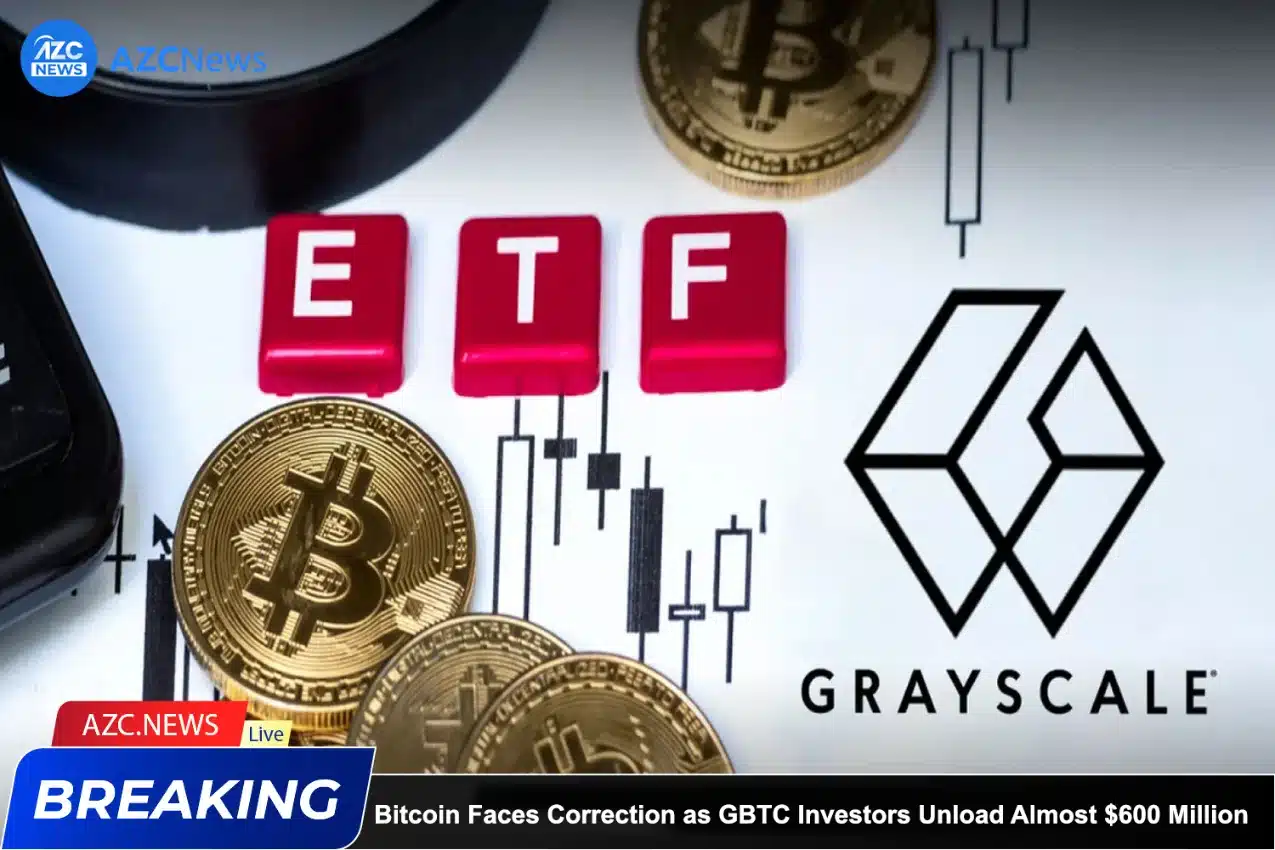Bitcoin experienced a 3% decline from its 24-hour peak as investors pulled a substantial $598.9 million from Grayscale’s spot Bitcoin exchange-traded fund (ETF) on February 29, marking the second-largest net outflow on record. Despite reaching a high of $63,585 early on February 29, Bitcoin has retreated approximately 3.3% to hover just below $61,500.
The retreat coincides with Grayscale Bitcoin Trust (GBTC), the recently converted ETF managed by Grayscale, witnessing daily net outflows nearly reaching $600 million on February 29, according to preliminary Farside Investor data. This figure is only surpassed by the record-setting net outflow of $640.5 million recorded on January 22.

Bloomberg’s senior ETF analyst, Eric Balchunas, highlighted the significance of the day’s outflows in a February 29 post, emphasizing the substantial impact. These near-record outflows follow closely on the heels of GBTC achieving a historic low daily net outflow of $22.4 million on February 26, prompting Balchunas to characterize the situation as “two steps forward, one step back.”
On February 28, the ten United States spot Bitcoin ETFs collectively recorded a historic net inflow of $673.4 million, coinciding with Bitcoin’s surge to a more than two-year high of $64,000.
The notable outflows from GBTC could potentially influence the day’s overall inflows. While complete inflow data for the other nine ETFs is currently unavailable, Farside’s February 29 data reveals that Fidelity’s Bitcoin ETF, among the top three largest funds by assets, generated only $44.8 million in net inflows, marking its fourth-lowest day of inflows.
$600m outflow for $GBTC today. That’s a lot. Two steps forward one step back. https://t.co/eWaEPMzUIW
— Eric Balchunas (@EricBalchunas) February 29, 2024
In a recent advisory to investors, JPMorgan analysts cautioned that the price of Bitcoin might experience a decline once the “halving euphoria” subsides.
Contrary to the widespread expectation that Bitcoin’s price will surge following the April halving event, analysts caution that it could potentially dip to approximately $42,000, as revealed in a February 29 note obtained by Bloomberg. The upcoming halving will reduce the Bitcoin block reward from 6.25 BTC to 3.125 BTC, historically triggering price rallies due to heightened miner production costs.
While production costs, reflecting the expense of mining one Bitcoin, are typically considered a baseline for Bitcoin’s price, the analysts suggest a potential mechanical doubling to $53,000 post-halving. However, an unforeseen 20% reduction in mining difficulty could alter this trajectory, causing production costs and Bitcoin’s price to slide to the $42,000 mark after the April halving.
Related: Bitcoin ETF Expected to Experience Stronger Growth in the Coming Months
The projected decrease in mining difficulty is attributed to the assumption that some miners operating less efficient machines, coupled with limited resources for upgrades, may deactivate their rigs as operational expenses rise. This anticipated scenario would result in a 20% decline in Bitcoin’s hash rate and subsequent mining difficulty, aligning with estimates from Galaxy Digital made last month.
Despite these calculations, the analysts acknowledge the uncertainty surrounding the mining difficulty drop, emphasizing that inefficient mining rigs might remain profitable, especially if Bitcoin’s price remains elevated, driven in part by demand from Bitcoin ETFs.







davidazaman5@gmail.com
All these are just your speculation right, because what I know Bitcoin will surely do what is best for me and who ever believe 💯 too
mgbebuedozie137@gmail.com
Kya karna ha
Thanks for sharing. I read many of your blog posts, cool, your blog is very good.